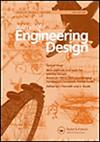从复杂性和设计角度对生物SE系统进行系统研究
IF 3.4
2区 工程技术
Q1 ENGINEERING, MULTIDISCIPLINARY
引用次数: 0
摘要
摘要以往的研究提出了自我工程(SE)系统的概念,旨在自主识别和保持系统功能。自我工程反应的例子包括自我修复、自我修复、自我适应和自我重构。生物学已经利用了许多这样的反应来修复和生存,对这些生物系统复杂性的更多理解可以改善未来的生物灵感设计。本文提出了一种新的SE生物系统复杂性的系统评价方法。使用公理设计和复杂性对确定的八个生物自我工程系统进行了评估。确定了每个生物系统的关键功能需求和设计参数。设计矩阵用于突出不同类型的复杂性。利用SE复杂性理论对8个SE生物系统进行了进一步的评价;9位专家和23名学生利用复杂性理论完成了一项排名练习。对排名结果进行了分析和比较,并为每个因素和生物系统绘制了最终的归一化平均值。从这两项研究的分析中,提出了设计规则,以帮助设计师处理复杂性,同时创造受生物学启发的新的自我工程系统。作者首先要感谢所有同意参加第5节中详细介绍的练习的学生和专家参与者。两个小组都提供了很好的意见和反馈。披露声明作者未报告潜在的利益冲突。本研究得到了工程与物理科学研究委员会的支持:[批准号EP/P027121/1]。本文章由计算机程序翻译,如有差异,请以英文原文为准。
A systematic study of biological SE systems from complexity and design perspectives
AbstractPrevious research has presented the concept of self-engineering (SE) systems that aim to identify and preserve system functions autonomously. Examples of self-engineering responses include self-healing, self-repair, self-adapting and self-reconfiguration. Biology already utilises many of these responses to repair and survive, greater understanding of complexity in these biological systems could improve future bioinspired designs. This paper provides a novel systematic evaluation of the complexity of SE biological systems. Eight biological self-engineering systems identified are evaluated using Axiomatic design and complexity. The key functional requirements and design parameters for each biological system are identified. Design matrices were used to highlight different types of complexity. A further evaluation of eight SE biological systems is performed using the SE complexity theory; nine experts and 23 students used the complexity theory to complete a ranking exercise. The results of the ranking were analysed and compared, with a final normalised mean plotted for each factor and biological system. From the analysis of both studies, proposed design rules are presented to help designers handle complexity while creating new self-engineering systems inspired by biology.KEYWORDS: Self-healingself-repairself-engineeringbioinspireddesign AcknowledgementsThe authors would first like to thank all the student and expert participants who agreed to take part in the exercise detailed in Section 5. Excellent comments and feedback were provided by both groups.Disclosure statementNo potential conflict of interest was reported by the author(s).Additional informationFundingThis work was supported by Engineering and Physical Sciences Research Council: [Grant Number EP/P027121/1].
求助全文
通过发布文献求助,成功后即可免费获取论文全文。
去求助
来源期刊

Journal of Engineering Design
工程技术-工程:综合
CiteScore
5.00
自引率
33.30%
发文量
18
审稿时长
4.5 months
期刊介绍:
The Journal of Engineering Design is a leading international publication that provides an essential forum for dialogue on important issues across all disciplines and aspects of the design of engineered products and systems. The Journal publishes pioneering, contemporary, best industrial practice as well as authoritative research, studies and review papers on the underlying principles of design, its management, practice, techniques and methodologies, rather than specific domain applications.
We welcome papers that examine the following topics:
Engineering design aesthetics, style and form-
Big data analytics in engineering design-
Collaborative design in engineering-
Engineering concept design-
Creativity and innovation in engineering-
Engineering design architectures-
Design costing in engineering
Design education and pedagogy in engineering-
Engineering design for X, e.g. manufacturability, assembly, environment, sustainability-
Engineering design management-
Design risk and uncertainty in engineering-
Engineering design theory and methodology-
Designing product platforms, modularity and reuse in engineering-
Emotive design, e.g. Kansei engineering-
Ergonomics, styling and the design process-
Evolutionary design activity in engineering (product improvement & refinement)-
Global and distributed engineering design-
Inclusive design and assistive engineering technology-
Engineering industrial design and total design-
Integrated engineering design development-
Knowledge and information management in engineering-
Engineering maintainability, sustainability, safety and standards-
Multi, inter and trans disciplinary engineering design-
New engineering product design and development-
Engineering product introduction process[...]
 求助内容:
求助内容: 应助结果提醒方式:
应助结果提醒方式:


